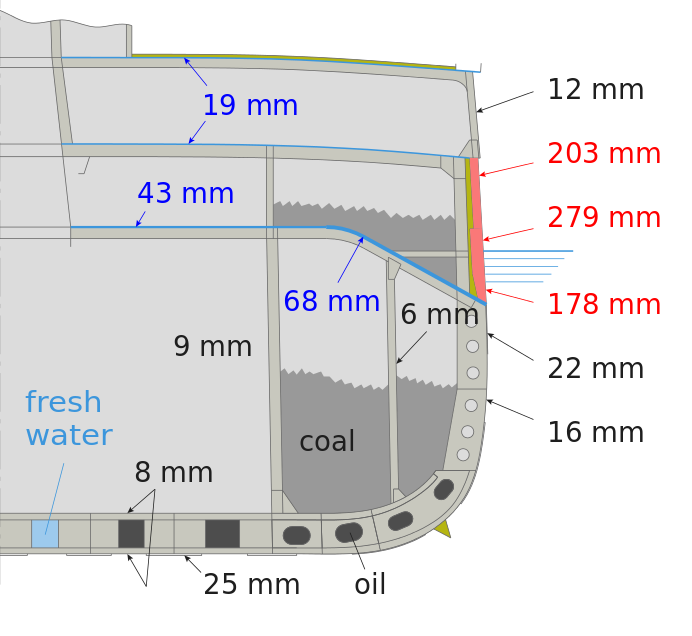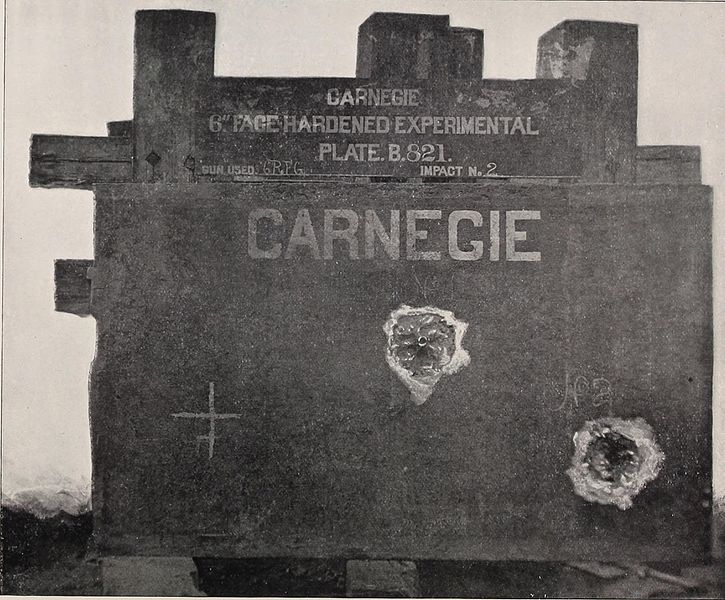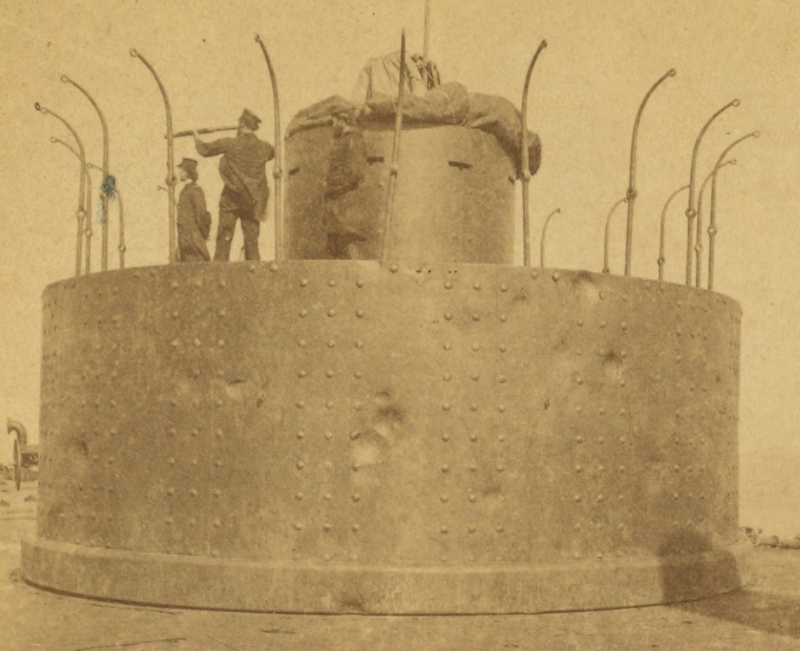The terminology of ships during the first half of the 20th century is rather confusing, so to explain things, I've put together a pair of glossaries, one for each of the world wars. Each entry will give a sketch of the kind of ship you’d be likely to find under each description. These are not intended to be completely comprehensive, as I just don’t have time. I’m sure my nitpickers valued commenters will be able to come up with all of the cases I missed. I've also written a similar guide to contemporary ships.
A Spotter's Guide to Warships of the World Wars
Two Months - Upcoming Topics
Today marks two months of regular Naval Gazing here. I bring this up because it seemed an appropriate point to ask again for thoughts on upcoming topics. I asked in early November, and got some good feedback, but it's been a while and my direction is taking more shape. So here is my existing topic list. Vote for what you want, or suggest things that aren't on it:
- Updates/expansion on the basic technical posts (weapons/engineering/etc.)
- More on design history1
- More early battleship battles
- More on WWI2
- More on WWII, either battleships or other matters
- Leyte Gulf
- Amphibious Warfare
- More on Net-centric warafare
- So you want to build a battleship - design, construction, finance, operations, disposal
- Torpedoes
- More on fire control and gunnery
- The USS Missouri on Thimble Shoal
- Mothballing
- Jackie Fisher
- The Falklands (War, or the Battle of the Falklands, I guess)
- Naval auxiliaries
- I have permission from Iowa's tour lead to repost some of his sea stories that he wrote up for the tour guides
- Ship control
- Merchant sailors in WWII/Operation Pedestal
- Never-realized design concepts of various powers
- More on modern naval warfare3
- Histories of specific battleships. I expect to start with the other Iowas, but would then move on to other ships with interesting/well-documented histories.
- Repairing a warship
- Analysis of ideal battleship armor schemes4
- Anti-submarine warfare
- Dry docks
- Battleship tactics
Again, even if you don't normally comment, or think the idea you have is probably stupid, please post it. I've gotten some really good ideas from people who almost never comment. I can only promise I'll do my best to get around to things voted for some day, but I do take it into account when deciding what to do.
Also, does anyone have ideas for how to make good maps relatively easily? I do want to revise the Jutland series, but the mapping is going to be a pain. Read more...
Armor Part 3
Dreadnought's armor scheme was surprisingly close to that of her immediate pre-dreadnought predecessors of the Lord Nelson class, and was in fact the only area where no great advance was made. This was partially because a major increase in protection would have been prohibitively costly, and partially because the Lord Nelsons themselves marked a significant improvement in armor, as the abolition of the 6" battery allowed much of the side armor, designed to protect the QF guns, to be eliminated.


Dreadnought's armor scheme (above) and a section view (below).
Due to the increasing power of guns, the area over which designers could provide adequate armor to keep shells out entirely was decreasing. It was concentrated in a thick lower belt near the waterline (11"/279 mm on Dreadnought), to stop shells from holing the ship in areas where adequate compartmentalization could not be provided, such as engines and magazines. To keep shells from going over the top of this belt, naval architects would provide a thinner upper belt (here 8"/203 mm), which would keep out light shells and set off heavy ones. The splinters from the heavy shells would be kept out of the vitals by an armored deck (1.75"/43 mm). Often, the edges of the armored deck were sloped down to meet the bottom of the belt, reinforcing it in case of penetration. Sometimes, an upper splinter deck was placed over the top of the upper belt, in case the ship took hits at long range, or when rolling enough to make the main armored deck vulnerable. Read more...
Armor Part 2
Armor penetration is a phenomenally complex issue, and one that isn’t wholly understood even today. But a basic explanation is necessary to understand why warship armor was designed the way it was during the dreadnought era.5 The basic factors that drive armor penetration can be roughly broken down into the armor, the shell, and how they meet. We’ll start with the last of these.

“How the armor and shell meet” boils down to impact velocity and obliquity, or angle of impact. A higher striking velocity is always going to result in higher penetration, all else equal. Obliquity is measured between the axis of the shell and the line normal (perpendicular) to the plate, so 0 obliquity is a direct hit and 80 degrees is a very glancing blow indeed. Oblique impacts have less penetration than direct ones, sometimes significantly so. This is not simply due to the geometry of the impact sending the shell through more metal, despite what most works that discuss armor penetration would have you believe. The front of the shell hits first, and the contact tends to make it rotate, either glancing off or hitting the armor side-first. This is obviously tremendously less efficient than a direct hit, and the usual counter was to design the projectile to dig in to the armor slightly, which would actually reverse this process. A shell hitting and piercing at high obliquity would come out with a lower obliquity than it went in at.6
Dreadnoughts of the Minor Powers
Besides the major naval powers, quite a few other countries bought or tried to buy dreadnoughts. Last time I discussed those built as part of the South American Dreadnought race. This time, we'll look at the Ottoman, Spanish, Austro-Hungarian, Greek, and Dutch battleships.

HMS Erin with a kite balloon for spotting
The Ottomans attempted to buy two battleships in the years before World War I. One of them, Sultân Osmân-ı Evvel, began life as the Brazilian Rio de Janeiro, and was discussed last time, while the other, Reşadiye, was ordered by the Ottomans directly, and armed with 10 13.5” guns. The design was similar to the British Iron Duke, although somewhat lighter.7 Like Sultân Osmân-ı Evvel, Reşadiye was seized by the British shortly after she was completed, for fear they would turn her over to the Germans. The ship, commissioned as HMS Erin, served at Jutland, where she fired a grand total of 6 rounds from her 6” secondary battery. Contrary to the experience of Agincourt, she was very cramped.8 After the war, Erin was scrapped under the Washington Naval Treaty.
Armor Part 1
Armoring a warship doesn’t seem like it should be hard. Figure out how much armor you need to stop what you expect to be shooting at you, and then slap that much on.

Dents on the turret of a Monitor after seeing action
Huascar Part 2
While Huascar was fighting the Esmeralda, another action was taking place off off Iquique. Another Peruvian ironclad, Independencia, had come with her, and had gone in pursuit of the Chilean Covadonga. This fight was, if anything, even more uneven than Huascar’s. Independencia was five times Covadonga’s size, armored, and three times faster.

Independencia
Covadonga’s captain, Carlos Condell, handled her with skill equal to Prat’s. He stayed close inshore, using the fact that Covadonga drew considerably less water than Independencia to avoid the Peruvian ship. The fact that his gunnery was as good as Independenica’s was bad helped, too. Independencia tried to ram twice, both times taking careful soundings on the way in and aborting when the water grew too shallow. A third attempt occurred near Punta Gruesa, where Covadonga barely avoided grounding. Independenica’s helmsman was killed by a sharpshooter just as she touched the reef, and she ran hard aground. Covadonga rounded and poured fire into Independenica’s stern, setting her on fire. Read more...
The South American Dreadnought Race
Most of the attention given to the dreadnoughts focuses on those of the major powers, Britain, the US, Germany, and Japan, with lesser attention on those of France, Italy, and Russia. But this is not the full story of the big-gun warship. Several smaller nations also bought them before World War I. The most prominent of these ships are those involved in the South American Dreadnought Race.

Minas Geraes in 1910, shortly after delivery
In 1907, flush with cash from a boom in rubber and coffee, and attempting to assert itself as a world power, Brazil ordered a pair of ships from British yards. These ships, the Minas Geraes class, were briefly the most powerful battleships in the world. Each ship had 12 12" guns, and a 10-gun broadside thanks to the unusual combination of wing and superfiring turrets. In response, Argentina and Chile both rushed to order dreadnoughts of their own.
Huascar Part 1
The story of the ironclad in battle takes us next to the Pacific,9 and the monitor Huascar. Built by Laird Brothers of Birkenhead for Peru, she was commissioned in 1866, slightly too late for the war she'd been ordered to fight. 1,870 tons, 220 ft long, and mounting 2 10" guns in a single turret, she was a reasonably powerful vessel for the day, although she was essentially a coastal defense ship. The belt ranged from 2.5" to 4.5", and her maximum speed was 12 kts.

Huascar as completed
Links 1 - Naval Engineering
Ran across a 2-part article, and thought I'd share it here. By a former Navy engineer, with lots of interesting bits on running a steam plant. Particularly valuable for his insights into reactivating old ships. I would quibble that there are still people who know how to run Iowa's plan and can make it down the ladder (I've done tours with a couple of them), but that's just nitpicking.

Recent Comments